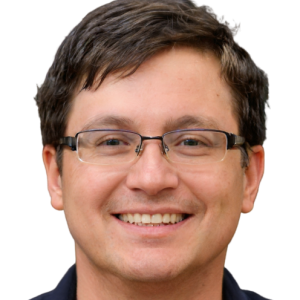In Australia, there is a thriving and active culture of entrepreneurship.
Because more than 15% of the population is already involved in entrepreneurial activity, this nation continues to rank well among the top countries where individuals may successfully launch their own companies.
Are you willing to learn some crucial information about entrepreneurship that will help your firm get off the ground?
The Most Interesting Things About Entrepreneurs in Australia
- About 10.5% of persons in Australia were involved in early-stage entrepreneurship.
- In 2020, Australia’s rate of new business formation was 5.8%.
- In 2019, Australian start-up companies made 86 million dollars in new investment transactions.
- Most new businesses launched in Australia are in the financial technology and banking sectors.
- In 2019, Australia received a score of 81.2 for the efficiency with which entrepreneurs have a high chance of success.
- In Australia, the month of December 2020 saw the registration of 18,484 brand-new enterprises.
- The likelihood of continued existence is lowest for sole proprietorships.
- The likelihood of company startup among Australian entrepreneurs is one-half that of their American counterparts.
- In 2020, there were over 582 million sole proprietors in Australia.
- Women hold thirty per cent of the companies in the Australian economy.
Entrepreneur Statistics in Australia

1. What Percentage of Australians Launch Their Businesses?
According to the 2019 survey, 10.5% of the population aged 18 to 64 was involved in early-stage entrepreneurship. This indicates that these people were launching a firm or had previously established one in the previous few years.
Based on the results of a study on entrepreneurial activity in Australia:
- 8.3% of workers were involved in employee ventures about entrepreneurship.
- 6.5% of respondents already had their own company.
- 5.8 % said they were in the initial stages of launching a company, and 5.1 % were actively participating in the process.
2. In 2019, Australia’s New Startup Funding Transactions Totalled Au$86 Million.
Even though this indicates a decline in value, the number of investment agreements reached a record high between 2006 and 2019. Furthermore, there were approximately 43 follow-on financing arrangements for new enterprises totalling AU$59 million.

3. The Rate Of Business Start-Ups Was 5.8% In 2020.
Chile had the most significant rate of new business start-ups in the world, at 19.8%, Italy at 0.9%, and Australia in the sixth position at 5.8%.
4. Most Australian Entrepreneurs Are Found In The Banking And Fintech Sectors.
According to an Australian poll conducted in 2019, the percentage adult population that has adopted fintech has hit 58%. This was a significant percentage (four times) of the rate anticipated for the nation in 2015. Besides, it was projected that the amount of fintech investment made in Australia would be approximately $563 million in 2021.
It should thus not be a surprise that most of Australia’s new businesses work in this sector, with companies specialising in payment processing, digital wallets, and supply management emerging as the most prominent types of fintech organisations.
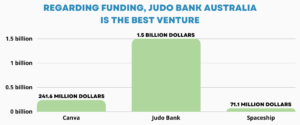
5. Regarding Funding, Judo Bank Australia Is The Best Venture.
In May 2020, Judo Bank was Australia’s most successful start-up company, having raised 1.5 billion US dollars in investment.
The company is a significant new player in the Australian banking industry, concentrating on providing loans to small and medium-sized businesses.
Judo Bank is followed by Canva, a digital design service, with 241.6 million dollars in investment, and Spaceship, with 71.1 million dollars.
6. Australia Services Accounted For Over 37% Of Venture Capital Funding.
The Venture Capital Limited Partnerships (VCLPs) program allocated these funds to Australian businesses. In 2020, the amount of money raised by the venture capital initiative amounted to $1.33 billion AU dollars.
Australian Entrepreneurship Conditions Statistics
7. In Australia, 2.4 Million Trade Companies Were Operating In 2021.
According to figures provided by the ABS, there were 2,402,254 trading enterprises in June of 2021.
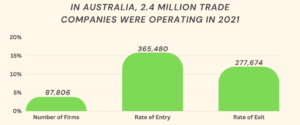
To be even more explicit, here are some figures obtained:
- There was an increase of 3.8% (87,806) in the number of firms.
- 15.8 % rate of entry (365,480 entries)
- 12.0% rate of exit ( 277,674 exits)
In the fiscal year 2020/21, the highest yearly increase was recorded by medium-sized businesses (those with 20–199 workers). Their number increased by 20.6%, while the number of firms that did not have employees decreased by 2.2%, totalling 1,410,049.
The construction industry achieved the highest net growth in the number of commercial enterprises, going from 16,603 to 410,839. This was accompanied by the Scientific, Professional, and Technical service sectors, which had 316,462 businesses, and then Health Care and Social Assistance sector, which had 159,076 businesses.
8. In 2019, Australia’s Rating For Business-Friendliness Was 81.2.
According to the extent to which their regulatory environments are conducive to the operations of businesses, the most recent assessments put Australia in 14th place, which is an increase from its previous position of 18th in 2018.
9. Australian Millionaires Increased By 31% In 2020.
The most significant spike in the number of millionaires in Australia occurred in 2020, when the number reached 635,000, representing a 31% rise from 485,000 in the previous year. These individuals have accumulated $2.77 trillion worth of assets, a 37% increase from the previous year.
10. 18,484 New Companies Were Established As Of December 2020.
(ASIC)
In December 2020, 2,830,764 firms were registered, of which more than 18,000 were brand-new firms. Most of these startup companies were in New South Wales (6586 companies), followed by the state of Victoria (5,298 companies).
In 2020, the number of newly established businesses was slightly higher than 344000, while the overall number of enterprises in Australia was predicted to be 42 million.
Australian Statistics on Start – UPS
11. The Pandemic Led To Small Firms Spending More On Marketing.
In the 2018-2019 fiscal year, 54.5% of small firms had developed their websites, while 47.8% participated in social media marketing. More than half participated in electronic commerce, with 63 per cent of respondents making purchases and 41.4 per cent getting items.
Digital promotion accounted for 73% of the marketing budgets of start-ups during the pandemic, and this number increased to 74% after the lockdown. 46% of businesses increased their activity on social media, and 34% launched a new website.
12. Australian Small Businesses Numbered 2.3 Million.
A company is considered small if it has fewer than twenty employees working for it. Following this criteria, small businesses made up 97.4% of all enterprises operating in Australia during the 2018-2019 fiscal year.
The following are more statistics about small businesses:
These companies are the largest employers in the nation, providing employment opportunities for more than 4.7 million individuals and providing 41% of the employees in the corporate world.
About 32% of Australia’s gross domestic product is accounted for by the value generated by small enterprises, which totals about $418 billion.
13. The Chances Of A Sole Proprietor Becoming Successful Are Very Minimal.
Small firms that don’t employ any workforce only have a 60% possibility of success after five years. On the other hand, big enterprises that have over 200 workers have an 87% chance of survival.
Statistics on the performance of small businesses compiled by CB Insights revealed that the primary reason for the failure of 38% of small businesses was going bankrupt. In comparison, 35% of companies failed due to a lack of demand for their products or services.
Besides there are also:
- An excessive amount of rivalry ( 20%)
- Problems with the company mode (19%)
- Regulation concerns (18%)
Five per cent of respondents said they had lost all interest in their company, while seven per cent blamed problems with the management team and financial backers.
Entrepreneurial Perceptions and Attitudes in Australia
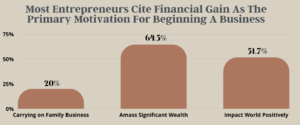
14. Most Entrepreneurs Cite Financial Gain As The Primary Motivation For Beginning A Business.
An online study found that 64.5% of respondents claimed the primary motivation for starting their own business was to amass significant wealth. The majority of those polled, 51.7%, expressed a desire to impact the world positively. In comparison, only around 20% of entrepreneurs in their early stages expressed an interest in carrying on family business.
15. Australian Social Entrepreneurs Have The Second-Best Opportunities Worldwide.
Compared to the results of the poll from 2016, Australia had the most improvement, moving up 24 positions. The gain in ranking may be attributed to several factors, including supportive policies for social entrepreneurs and business-friendly environments.
16. The likelihood of Starting A Business In Australia Is Half That of the US.
Comparatively, just 5.8% of people in Australia are starting a company, whereas 11.8% of people in the United States are doing so. Only over two-thirds of people in Australia feel that the country has a good reputation for making it easy to start and run a company.
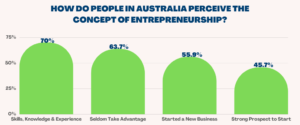
How do people in Australia perceive the concept of entrepreneurship? Here is what the statistics on entrepreneurship show:
- Seventy per cent of persons between 18 to 64 believe they have the skills, knowledge, and experience necessary to launch their own business.
- 63.7 per cent of respondents concur that they seldom take advantage of attractive possibilities whenever they arise.
- 55.9% of people are connected to an individual who has started a new business over the last two years.
- 45.7% of people are under the impression that there are strong prospects to start a business in their region.
Statistical Demographics of Global Entrepreneurship
17. How Many People In The World Are Entrepreneurs?
According to projections by the Global Entrepreneurship Monitor, the number of self-employed individuals who own their businesses will reach 582 million in 2020. This equates to almost one person in every 15 across the globe.
When the data was broken down by area, it was found that the Middle East and Africa had the most incredible entrepreneurial behaviour, with over half of Angola’s population (adults) having started or operated a new firm.
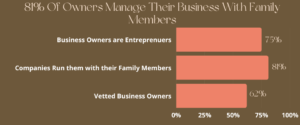
18. 81% Of Owners Manage Their Business With Family Members.
Around the world, 75% of business owners are also entrepreneurs and 81% of those who already have successful companies run them with their family members. According to 62% of vetted business owners, their immediate families comprise most of their current workforce.
19. The Age Group Between 25 And 34 Makes Up The Majority Of Start-Ups Worldwide.
Because an individual’s propensity to launch a new venture grows over time, the younger generations have the lowest likelihood of becoming company owners. As a result, older generations are less inclined to participate in entrepreneurial activity since their likelihood of beginning or continuing to run a new firm declines with age.
Statistics On Female Entrepreneurs
20. Women Own 30% Of Australian Businesses.
Australia is now ranked eighth on MIWE. Angola boasts the most significant proportion of female business owners worldwide (51.1%), but most of these ventures are motivated by necessity.
21. Women Hold 34% Of Enterprises In The World.
Women manage or own one out of every three firms, with percentages ranging from 18% in South Asia to 50% in the Caribbean and Latin America.
22. Obtaining Financial Services And Accounts Is More Difficult For Women than Males.
Compared to 65% of women, 72% of males access financial accounts. Men are more inclined to save money and take out loans to launch, run, or grow their firms. 17% of male entrepreneurs worldwide save, while 13% borrow. On the other hand, 10% of women save while 10% borrow.
75% of women began their businesses with their own money, compared to 71% of men, in Australia, which again is unexpected given the persistent gender wage discrepancy in the nation. Furthermore, 9% of women borrowed bank loans as opposed to 19% of males. Lastly, 7% of women were funded by their family members, while 11% borrowed funds from their partners.
23. In Australia, 45% Of Female Business Owners Began As Hobbyists Or People With A Passion.
A passion or interest is the driving force behind nearly half of all female entrepreneurs. However, the motivation for financial freedom was cited by 35% of male entrepreneurs.
Conclusion
Despite challenges brought on by the Covid-19 outbreak, Australia is still a great country to launch a business. Small enterprises in the nation have swiftly adjusted to developments and are still an essential source of economic expansion.
So, if you’re considering launching a company in Australia as a sole proprietor or using one of the lucrative partnerships available, consider these entrepreneurial statistics and utilise them to create a more potent and effective firm.

